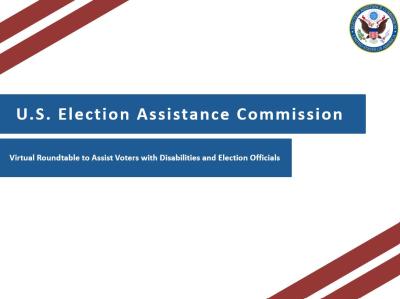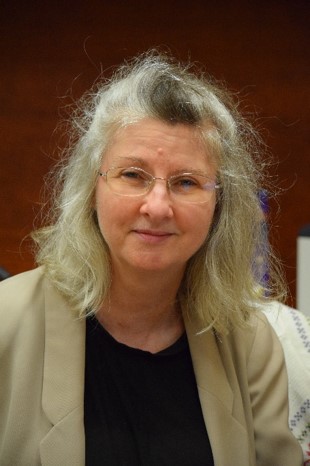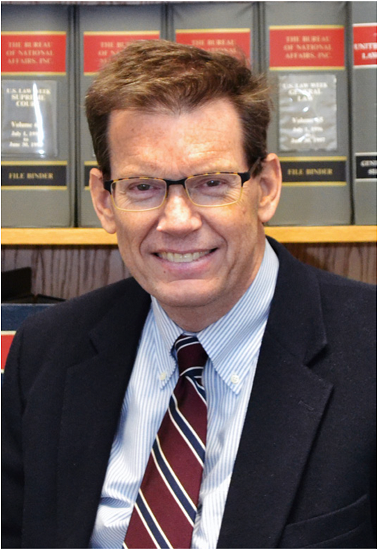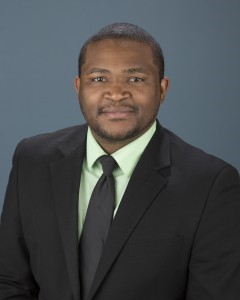
EAC Commissioner Thomas Hicks was joined by Lou Ann Blake (Deputy Executive Director, National Federation of the Blind), Lee Page (Associate Director of Advocacy, Paralyzed Veterans of America), Derek Bowens (Director of Elections, Durham County, NC), and Brett Harbage (ADA Coordinator, Office of the Ohio Secretary of State) for the first Virtual Roundtable to Assist Voters with Disabilities and Election Officials.
The participants discussed a range of topics including their top concerns for people with disabilities voting during in the COVID-19 environment, best practices, utilizing electronic ballot delivery for voters with disabilities, transportation issues, and what they hope to see in future development for election accessibility.
Electronic Ballot Delivery is Key for Many Voters with Disabilities
 All the panelists agreed that electronic ballot delivery is important for many voters with disabilities to be able to cast their ballot privately and independently. Lou Ann Blake described the options available to a state or jurisdiction does not have electronic ballot delivery, saying, “Those voters have the difficult choice of telling a sighted person what their choices are and trusting that they’ll mark the ballot for them as they’re instructed, or going to a polling place and possibly exposing themselves to the coronavirus.”
All the panelists agreed that electronic ballot delivery is important for many voters with disabilities to be able to cast their ballot privately and independently. Lou Ann Blake described the options available to a state or jurisdiction does not have electronic ballot delivery, saying, “Those voters have the difficult choice of telling a sighted person what their choices are and trusting that they’ll mark the ballot for them as they’re instructed, or going to a polling place and possibly exposing themselves to the coronavirus.”
Brett Harbage spoke about the current process that they have in Ohio for electronic ballot delivery. Voters must first apply in writing to receive an accessible ballot via email. When they receive it, they can mark their ballot on their computer using their own assistive technology; they print and sign it, and finally return the ballot via mail. Although the final step is to print and sign it, which might not be fully accessible to some voters, Mr. Harbage said this step is key for security and safety of the ballot.
Advocates and Election Officials are waiting for an Accessible Voting System Similar to UOCAVA
Although concerns, best practices, and methods of voting varied among the  participants, they all agreed on where they hope to see accessible voting in the future –a system similar to what exists for UOCAVA voters. Lee Page said, “The electronic ballot comes to a person you know via the email. You can open it, review the ballot, take your time to make your choices and then respond and then send it back electronically. As I mentioned, overseas military vote has been doing that for many years and it comes back to the designated spot.” Ms. Blake and Derek Bowens echoed the sentiment that this is highly desired by the disability community and they hope to see this as option in the future.
participants, they all agreed on where they hope to see accessible voting in the future –a system similar to what exists for UOCAVA voters. Lee Page said, “The electronic ballot comes to a person you know via the email. You can open it, review the ballot, take your time to make your choices and then respond and then send it back electronically. As I mentioned, overseas military vote has been doing that for many years and it comes back to the designated spot.” Ms. Blake and Derek Bowens echoed the sentiment that this is highly desired by the disability community and they hope to see this as option in the future.
Ms. Blake also mentioned that in addition to this type of voting system, she hopes to see two other developments in election technology. The first would be a tabulator that processes ballots printed on regular printer paper so election officials will not have to transfer someone’s printed ballot onto a regular ballot, which can be a little worrisome to voters. She explains the second new technology development she would like to see: “I think it would be really cool if someone would develop a smartphone app that would enable a blind voter to verify their printed ballot.” Mr. Bowens added he would also love to see developments in this area to help voters confirm that their ballot was marked as they intended.
Communication between Election Officials and the Disability Community is Vital
Mr. Harbage spoke about the importance of connecting and communicating with the disability community in your state or county to help spread the information on the different ways to vote. The more the voters know, the easier it will be for them to make a decision on which voting method is the best and most accessible to them. He said, “I think it’s important that, you know especially when we’re dealing with COVID-19, to make sure people with disabilities understand the different options when it comes to being able to cast your ballot.” This dialogue is key not only getting information about the election out to the community, but also important so election officials can receive feedback about what does or does not work after an election.
Best Practices to Assist Voters Casting Their Ballots In-Person
Although all the panelists agreed that electronic ballot delivery and marking is the most accessible way for some voters with disabilities to vote, they also shared some best practices to help make in-person voting more accessible. Mr. Bowens shared several practices they have in Durham County, North Carolina, including one regarding voting technology. He said, “We designate at each site, what we call a Technology Coordinator that is trained on the voting equipment and is able to really give enhanced help, to the extent that is requested, by a voter needing that assistance on ADA compliant machines.” They also utilize curbside voting with call bells and North Carolina is currently trying to pass legislation that would create an online portal for voters to apply digitally for an absentee ballot.
accessible way for some voters with disabilities to vote, they also shared some best practices to help make in-person voting more accessible. Mr. Bowens shared several practices they have in Durham County, North Carolina, including one regarding voting technology. He said, “We designate at each site, what we call a Technology Coordinator that is trained on the voting equipment and is able to really give enhanced help, to the extent that is requested, by a voter needing that assistance on ADA compliant machines.” They also utilize curbside voting with call bells and North Carolina is currently trying to pass legislation that would create an online portal for voters to apply digitally for an absentee ballot.

